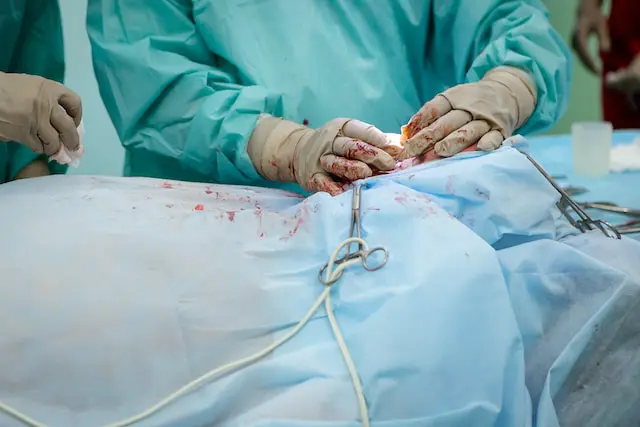In recent years, the field of cardiac surgery has witnessed significant advancements in surgical techniques, particularly with the emergence of minimally invasive procedures.
These procedures offer several benefits over traditional open-heart surgeries – whether that’s to treat mitral valve regurgitation, insertion of a pacemaker, or a coronary artery bypass – such as reduced trauma, shorter recovery times, and improved cosmetic outcomes.
In this blog, we will explore the various minimally invasive techniques that have revolutionized the field of cardiac surgery.
Minimally Invasive Coronary Artery Bypass Grafting (CABG)
Coronary artery disease (CAD) is a common condition that often requires bypass grafting to restore blood flow to the heart. Minimally invasive CABG involves accessing the heart through small incisions and utilizing specialized instruments. This technique offers reduced pain, decreased blood loss, and shorter hospital stays compared to traditional CABG.
Robot-Assisted Cardiac Surgery
Robot-assisted cardiac surgery employs robotic arms controlled by surgeons to perform complex procedures with enhanced precision. This technique allows surgeons to operate with greater dexterity and reach anatomical areas that are difficult to access using traditional methods. Robot-assisted surgery is commonly employed for mitral valve repairs, atrial septal defect closures, and coronary artery bypass procedures.
Transcatheter Aortic Valve Replacement (TAVR)
TAVR is a groundbreaking minimally invasive procedure used to replace a diseased aortic valve. Instead of open-heart surgery, a catheter is inserted into a blood vessel, typically in the groin, and threaded up to the heart. The new valve is then implanted within the diseased valve using specialized techniques. TAVR offers a quicker recovery time and is especially beneficial for high-risk patients who are not suitable candidates for open-heart surgery.
Percutaneous Coronary Intervention (PCI)
Percutaneous coronary intervention, commonly known as angioplasty, is a minimally invasive procedure used to open blocked or narrowed coronary arteries. During PCI, a catheter with a balloon at its tip is threaded through the blood vessels to the site of the blockage. The balloon is inflated, pushing the plaque against the artery walls, and a stent is often placed to keep the artery open. PCI allows for rapid relief of symptoms and shorter recovery times compared to traditional bypass surgery.
Minimally Invasive Ventricular Assist Devices (VADs)
Ventricular assist devices are mechanical pumps used to support heart function in patients with severe heart failure. Minimally invasive VAD implantation involves placing the device through small incisions in the chest instead of performing a full sternotomy. This approach reduces the risk of infection, minimizes blood loss, and speeds up recovery.
Endoscopic Vein Harvesting
Traditionally, harvesting a saphenous vein for use as a graft in coronary artery bypass surgery required a long incision in the leg. Endoscopic vein harvesting is a minimally invasive technique that utilizes small incisions and a specialized endoscope to visualize and harvest the vein. This method reduces postoperative pain, lowers the risk of wound complications, and improves patient satisfaction.
Minimally invasive techniques have revolutionized the field of cardiac surgery, providing patients with safer and more efficient alternatives to traditional open-heart procedures. From minimally invasive CABG to robot-assisted surgery, TAVR, PCI, VAD implantation, and endoscopic vein harvesting, these techniques have improved patient outcomes, reduced complications, and accelerated recovery times. As technology continues to advance, it is likely that even more innovative minimally invasive approaches will emerge, further enhancing the field of cardiac surgery and improving the lives of countless patients worldwide.
Read Also:

1 Comment